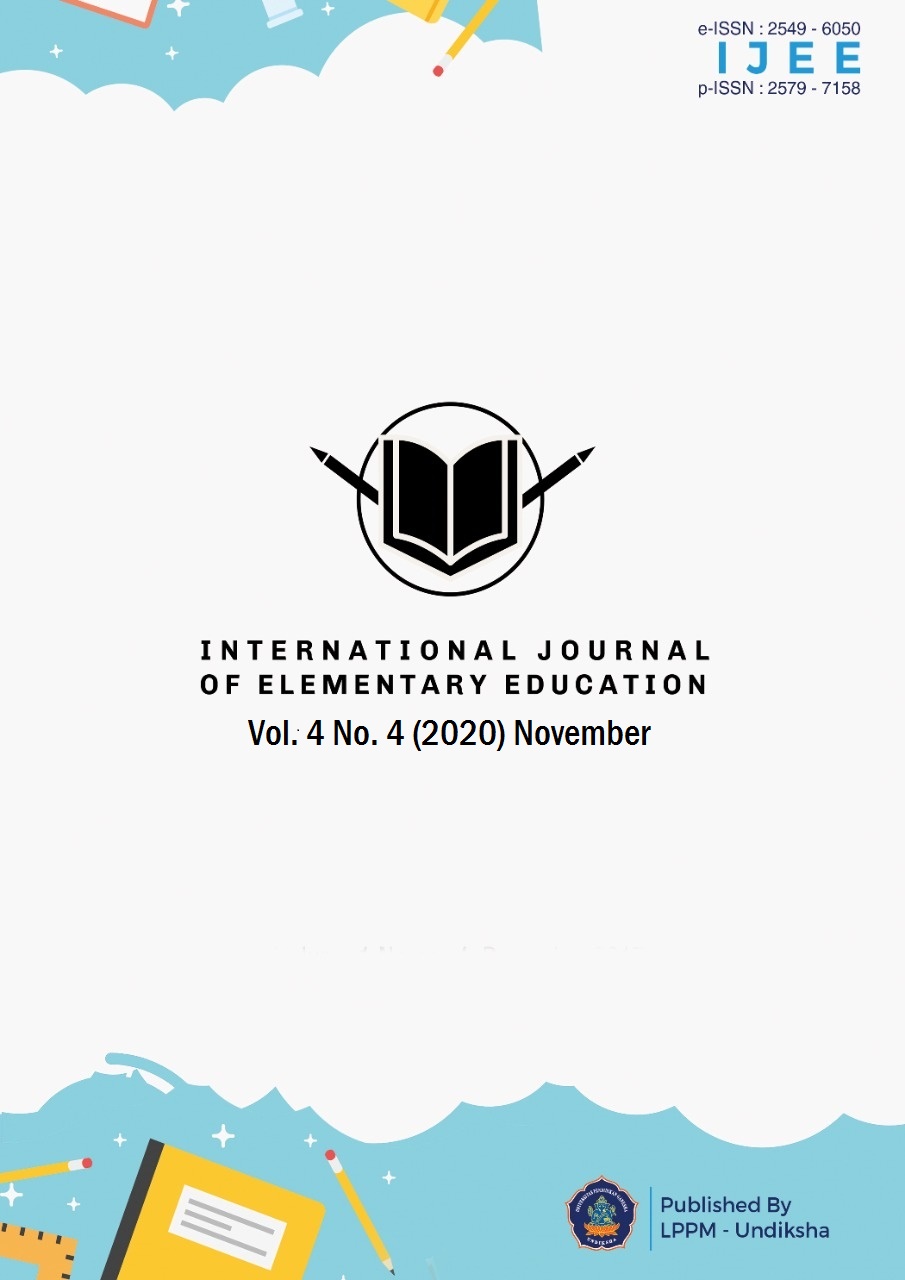The Effect 0f Cerdas Learning Model on the Result of Students’ Natural Science
DOI:
https://doi.org/10.23887/ijee.v4i4.27221Keywords:
Indonesian, picture card, scrambleAbstract
The problem of this research was the lack of teachers in using innovative learning that affects studens’t learning outcomes. This research aimed to determine the effect of the “CERDAS" learning model on students’ natural science learning outcomes. The type of this research was a quasi-experimental research with a Post-test Only Control Group Design. The population of this research was all 128 students who were spread into eight schools. The sampling technique used in this research was the intact group random sampling technique. Based on the lottery technique, the results on fourth grade students of SDN 1 students were obtained as a control group and SDN 2 studnets as an experimental group consisted of 43 studnets. The method of data collection was done by a test method with a multiple choice test learning instrument in the form of 40 questions. T-test was used in this research. The results showed that there was an effect of the SMART learning model on the learning outcomes on the fourth grade natural science students in elementary school. This was indicated by the average score of the science learning outcomes test of the experimental group students was higher than the control group and the results of the t-test. So it can be concluded that the CERDAS learning model had a positive effect on the learning outcomes on fourth grade natural science students.
References
Arends, R. (2008). Learning to Teach. Pustaka Pelajar.
Arikunto, S. (n.d.). Metodologi Penelitian Suatu Pendekatan Proposal. PT. Rineka Cipta.
Dimyati, M. (2006). Belajar dan Pemebelajaran. PT. Rineka Cipta.
Hamzah, A. (2009). Teori Multiple Intellegences dan Implikasinya terhadap Pengelolaan Pembelajaran. Tadris, 4. http://ejournal.stainpamekasan.ac.id/index.php/tadris/article/view/256
Haryono. (2013). Pembelajaran IPA yang Menarik dan Mengasyikkan : Teori dan Aplikasi PAIKEM. Kepel Press.
Indriani, F. (2015). Kompetensi Pedagogik Guru dalam Mengelola Pembelajaran IPA di SD dan MI. FENOMENA, 7. https://journal1.iain-samarinda.ac.id/index.php/fenomena/article/view/267/213
Purwanto. (2009). Evaluasi Hasil Belajar. Pustaka Belajar.
Rofiah, N. . (2016). Menerapkan Multiple Intellegence dalam Pembelajaran di Sekolah Dasar. In http://jurnalnasional.ump. ac.id/index.php/Dinamika/about/contact.
Suartika, I K., I W. Santayasa, dan I. W. S. W. (2016). Pengaruh Model Pembelajaran Kooperatif terhadap Hasil Belajar IPA dan Rasa Percaya Diri (Selft Esteem) pada Siswa SMP Negeri 6 Amlapura. E-Journal Program Pascasarjana Undiksha, 6. https://media.neliti.com/media/publications/207090-pengaruh-model-pembelajaran-kooperatif-t.pdf.
Suprijono, A. (2009). Cooperatve Learning : Teori dan Aplikasi PAIKEM. Pustaka Pelajar.
Susanto, A. (2013). Teori Belajar dan Pembelajaran di Sekolah Dasar. Kencana Prenadamedia Group.
Suwardi. (2018). Penerapan Model Pembelajaran Kooperatif untuk Meningkatkan Hasil Belajar Kognitif dan Aktivitas Siswa Sekolah Dasar. Proceeding Biology Education Conference, 5. https://jurnal.uns.ac.id
Trisnani, I. et al. (2014). Evaluasi Program Pembelajaran IPA. Jurnal Teknologi Informasi Komunikasi Pendidikan, 2.
Winarti, A. (2015). Pengembangan Model Pembelajaran “CERDAS” untuk Meningkatkan Kecerdasan Majemuk dan Penguasaan Konsep IPA Siswa SMP. Universitas Negeri Surabaya.
Downloads
Published
How to Cite
Issue
Section
License
Authors who publish with the International Journal of Elementary Education agree to the following terms:
- Authors retain copyright and grant the journal the right of first publication with the work simultaneously licensed under a Creative Commons Attribution License (CC BY-SA 4.0) that allows others to share the work with an acknowledgment of the work's authorship and initial publication in this journal.
- Authors are able to enter into separate, additional contractual arrangements for the non-exclusive distribution of the journal's published version of the work (e.g., post it to an institutional repository or publish it in a book), with an acknowledgment of its initial publication in this journal.
- Authors are permitted and encouraged to post their work online (e.g., in institutional repositories or on their website) prior to and during the submission process, as it can lead to productive exchanges, as well as earlier and greater citation of published work. (See The Effect of Open Access)









